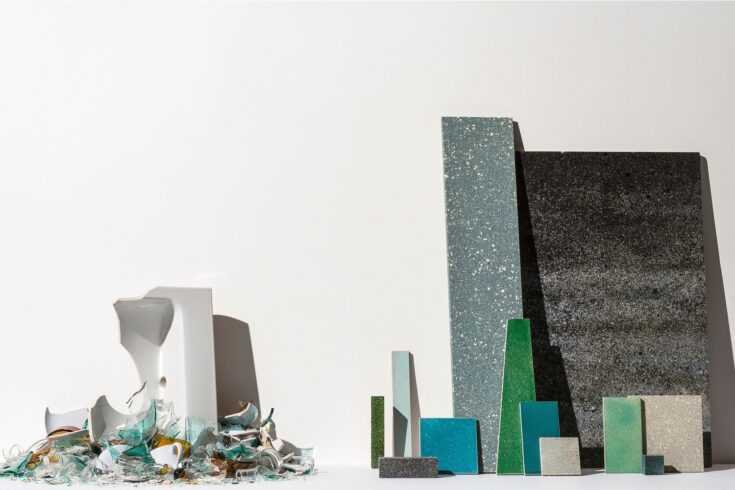A major new exhibition at the Design Museum, exploring how design can tackle throwaway culture, features research projects funded by UK Research and Innovation.
To coincide with the UN Climate Change Conference (COP26), the Design Museum’s Waste Age – What Can Design Do? exhibition shows what design can do to tackle the critical problem of waste. The exhibition explores its environmental consequences across the globe.
The exhibition is part of a wider research collaboration between the Design Museum and the Arts and Humanities Research Council (AHRC) and opens on 23 October.
It showcases how visionary designers are reinventing our relationship with waste and displays new artistic commissions that confront the waste problem.
Repurposing materials destined for landfill
Waste Age also exhibits outputs from cutting-edge research projects, funded by the AHRC, the Economic and Social Research Council (ESRC) and Innovate UK, that tackle the problem of waste.
One exhibit looks at materials produced by Alusid, a business that sets out to explore how waste and low-value materials destined for landfill could be repurposed into beautiful, versatile surface materials.
Alusid was born out of an academic research project led by Professor David Binns and Dr Alasdair Bremner, originally funded by AHRC. The project, based at the University of Central Lancashire, explored how low-value materials including ceramic toilets or post-consumer glass could be diverted from landfill and transformed into quality surface materials.
Their tiles and sheet materials are manufactured from at least 98% waste material. They are currently developing recycled glazes and scaling up their production while addressing the logistical challenges of ensuring reliable supply chains of waste material.
A circular system of food production
Another project featured is Bin Burger, a concept which has grown out of the following research projects:
- The Moveable NEXUS: Design-led Sustainable Water, Food and Energy Management within the New Boundary, co-funded by AHRC and ESRC
- The Moveable Nexus: Design-led urban food, water and energy management innovation in new boundary conditions of change, funded by Innovate UK.
The fictitious fast-food outlet proposes that London food waste is used to fertilize or feed future food sources.
The proposal is to create a circular system of production and waste to reduce the food industry’s environmental impact and suggests lifestyle changes to be made for a waste-free future.
Providing user-focused, sustainable solutions
Professor Christopher Smith, Executive Chair, Arts and Humanities Research Council said:
We are proud to be working with the Design Museum to tackle the waste problem in our society.
Design research has the power to imagine new ways of living that can shape policy, industry and public behaviour.
The arts and humanities are vital for developing truly human-centred innovations that will change the way that we live through providing user-focused and sustainable solutions.
Gemma Curtin, Waste Age Curator said:
We must face the problem of waste: we can no longer ignore what happens to things when we get rid of them.
Instead of thinking of objects as things that have an end life, this exhibition proposes that they can have many lives.
This is not just an exhibition, it is a campaign to #EndTheWasteAge and we all have an active part in our future. The exhibition will show design is at the forefront of sustainable solutions.
Find out more about the exhibition
The full exhibition details and tickets are available on the Design Museum website.
The full Waste Age: What Can Design Do? press release is available on the Design Museum website (PDF, 14MB).
Find out more about how the Arts and Humanities Research Council works with the Design Museum.
Top image: Range of surface materials made from ceramic and glass waste, 2015-ongoing. Credit: Alusid (co-founded by David Stuart Binns and Alasdair Bremmer)

